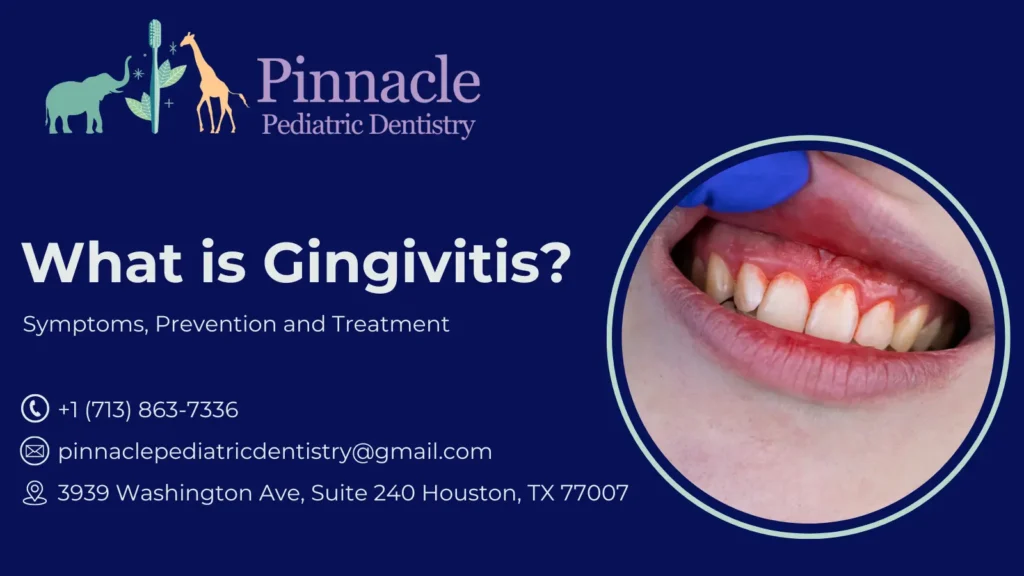Gingivitis: Symptoms, Prevention and Treatment
Gingivitis is characterized by the presence of gingival inflammation without detectable loss of bone and is extremely common in children. It is the early stage of gum disease that can be treated and reversed if diagnosed early.
Major Causes of Gingivitis

Gingivitis is usually caused by inadequately cleaning the teeth and gingiva (gums). When the teeth are not properly cleaned, the remaining plaque irritates the gums. The bacteria and toxins can cause the gums to become swollen, irritated and infected.
Other causes of gingivitis are uncontrolled diabetes, hormonal changes during puberty or pregnancy, certain medications, malaligned/crowded teeth and ill-fitting restorations or appliances (crowns, fillings and/or space maintainers).
If treatment is not received, gingivitis could progress into periodontitis, an advanced and more serious state of gum disease.
Signs and Symptoms of Gingivitis
1. Gums that bleed easily.
2. Red Gums.
3. Swollen Gums.
4. Puffy Gums.
How to Prevent Gingivitis?
Gingivitis can be prevented through proper oral hygiene, including daily brushing and flossing of the teeth.
How to Diagnose Gingivitis?
It is recommended that your child visits their pediatric dentist after the signs of gingivitis appear. The dentist will check for the symptoms of gingivitis and may also examine the content of plaque at the base of the teeth.
Additionally, the dentist may test for periodontitis, by the use of radiographs (x-rays) or by gingival probing.
Treatment of Gingivitis
A dentist or hygienist will perform a thorough cleaning of the teeth and gingiva (gums). Following this treatment, persistent oral hygiene is necessary.
The removal of plaque may be painful, but the inflammation of the gums should be alleviated between one and two weeks. Oral hygiene is required to prevent the recurrence of gingivitis. Anti-bacterial rinses or mouthwash may reduce the swelling.
Possible Complications of Gingivitis
1. Recurrence of gingivitis
2. Periodontitis
3. Infection or abscess of the gums or the jaw bones
4. Bacterial infection and ulceration of the gums
